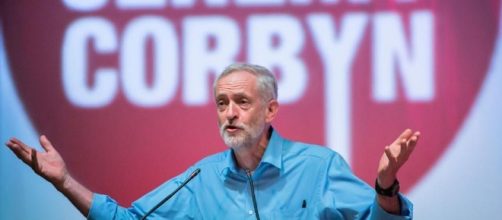New Labour. Tony Blair. Three consecutive election victories. For over a decade Labour were the dominant force in British politics. But what has happened now? How have they fallen so far? And what is of the future for the Labour Party?
Conservative dominance
It is important to start in the year 1994. After 15 years of Conservative governments, it was clear that change was needed. Throughout the 1980s, the Labour party were in disarray. After the election defeat in 1979, Labour underwent a period of "internal rivalry" as stated on wikipedia between the 'left' of Tony Benn and the 'right' of Denis Healey.
With Michael Foot as leader, failed policies continued; the creation of a national minimum wage the most significant. His ideas were seen to be "leftist policies". In 1983 another heavy election defeat followed; this time only securing 27.6 percent of the vote and its lowest since 1918. Although another election defeat followed in 1987, the tide was slowly beginning to change in British politics. This was largely down to the appointment of Neil Kinnock who dropped the party's unpopular policies. As a result 1987 Labour reduced the Conservative's majority from 143 to 102.
New Labour
Although there had been a changebetween the two parties, something different was still required. This came from Tony Blair.
After becoming party leader in1994, there was the creation of New Labour. It was perceived as a new direction for the party, a change from Old Labour, with less of a focus on the left wing policies of the past. This ideological change laid the foundations for Labour's dominance. With a shift to the right, Labour dominatedBritish politics for over a decade with landslide victories in 1997 and 2001 in particular. The Labour party under Tony Blair had become a party for all. There were also many positive things accomplished. As stated on www.keeptonyblairforpm.com,there was greater funding for education, employment at its highest level ever and more nurses and doctors. It was a golden age for Labour; a period of sustained dominance.
Labour today
It is with this in mind that I turn to where we are today. With the Labour party in the doldrums and a resurgent Conservative party, change was desperately needed. And that was meant to come in the form of Jeremy corbyn. However since his election to Labour leader in 2015 there have been numerous problems. Most of these have stemmed from his policies. As reported in The Daily Telegraph, Corbyn not only believes in "higher taxes for the rich", but also the removal of privitisation in the NHS and renationalisation of the railways. The problem is that many in his party do not support him. His policies are simply "out of step" with other MPs. This is largely because the make-up of the party is different now.
It is not the 1970s anymore. As a result of the Blair and Brown years, the party remains "a centrist group". It is as a result of this that we have been general discontent in the party. This was been demonstrated not only by the resignation of a number of shadow cabinet ministers earlier this year, but also the leadership challenge byOwen Smith. Now, although Corbyn won with 61.8 percent of the vote, as the BBC stated, the fact that there was a challenge only a year after being elected, shows that all is not well.
It is clear that Labour have problems. But it seems to be that the problems lie with Corbyn. It was no coincidence that Labour started to dominate in the 1990s after they distanced themselves from Old Labour.
It was no longer functioning. People no longer felt connected to the values of the past; something that Tony Blair recognised. It is because of this that it is all the most strange that one would want to go back to that time. It is clear his MPs don't support that move, the country has most definitely moved on and it is now the time to appeal to the masses. Until Corbyn realises this, they may not win another election for a very long time if he is still leader.

